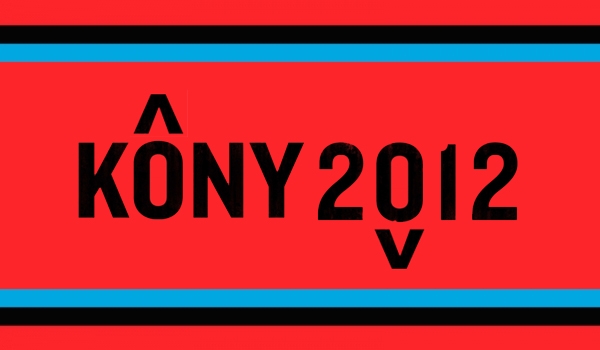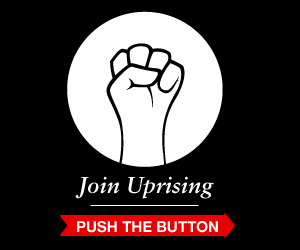The Ups & Downs of Kony 2012
Posted on 9th Mar 2012 by Mehdi Mollahasani in Blog
Over the past 9 years, Invisible Children and communities of grassroot activists have been working to build a movement to make one really bad man, really famous. Their goal is to influence policy makers in order to maintain an international effort to find and arrest Joseph Kony. Kony and the Lord’s Resistance Army (LRA) have taken children from their parents and force them to do horrible things. Although the LRA is a weakening force, Kony needs to be held responsible for the crimes that he committed since 1990s. Kony turned boys into child soldiers and girls into sex slaves. His crimes include murder, sexual slavery, rapes and abductions of children. This has brought him to the top of the International Criminal Court’s list of world’s worse criminals.
Kony 2012 is a beautiful and well-published documentary that tells the amazing and inspiring story of this movement. The documentary received 60 million views on YouTube in just four days and became a worldwide trending topic on Twitter.
There has been plenty of support for this movement from around the world but it has also had its share of criticisms. Let me address some of these criticisms before I present my analysis of the movement.
1. The LRA is a weak army and they are on the brinks of survival, why should such a small threat receive the attention of the world, while so many other important issues are being ignored.
Bringing the world’s worse criminal to justice is a worthwhile cause. It also elevates the reputation of International Criminal Court and strengthens the global justice system. Although there have been plenty of grassroot efforts to build this movement, no one expected that it would receive this much attention. This movement has shown us that the world can turn upside down when we all connect and collaborate through social media.
2. The Kony 2012 campaign oversimplifies a complex issue.
I agree, this campaign does oversimplify the attempt to arrest the world’s worse criminal, but this is why we elect politicians to tackle these complex problems for us. The campaign is only trying to raise awareness, after all if this video had not gone viral, I would not have written this article in the first place and none of us would be talking about this issue today.
3. The video shows what Joseph Kony did at the peak of the conflict, but it does not take into consideration the full realities of the current situation where things have improved in Uganda.
The documentary showcases the atrocities of Joseph Kony at the height of his rule but at the same time it demonstrates visually that the LRA have moved out of Uganda and it also mentions that currently “Ugandans are relatively safe”. However due to the storytelling techniques used in this documentary, many viewers might perceive that the children of Uganda are still at risk.
4. This documentary shows an outsider trying to be a hero, rescuing African children and presents Africans as hopeless.
I agree with this criticism, the video definitely shows Americans as being the only hope for African children even though they included my Prime Minister, Stephen Harper as one of the policy makers. This story has been played in many Hollywood films such as Avatar, The Last Samurai and The Last of the Mohicans among others. Kirby Ferguson the producer of Everything is a Remix calls this genre “Sorry About Colonialism.”
5. Only a third of what the organization receives actually goes towards helping people on the ground.
Two weeks after the Haiti earthquake, 40 US charities received $560 million dollars in donations. Dan Pallotta is an expert in nonprofit sector innovation, in his 2010 HBR article he mentioned that “The reason people [were] giving so much money to Haiti is simple: They [were] hearing about it.” The 24 hours a day, seven days a week coverage of the issue by traditional and new media helped these charities to stay on the radar and increased their fundraising efforts dramatically. Yet to this day, charities are criticized for spending “too much” money on promoting their causes. Most of us expect our donations to directly help the cause as oppose to being spent on Human Resources, travels and other elements that are important to a successful organization.
There are many other criticisms about this documentary and the organization behind it, however there are several really important factors about the movement that we should pay attention to.
This movement should certainly be a lesson to charities about the importance of marketing and advertising. We as a society need to change our psychology of charity and realize the important of promotion and human resource for the causes that we support. After all we wouldn’t expect a startup company to become successful without promoting their products and/or services.
This movement has opened our eyes to an important cause, which unfortunately has not previously received its share of our attention. It is a global human movement and it shouldn’t be about one organization. Currently there are 7 other charities that are fighting for child soldiers. They should all be taking advantage of this movement and use the attention that is attracting globally to increase their operations.
Finally, this movement should be another example of the importance of social media as a tool to bring global change. The youth of the world should take full advantage of this powerful tool to connect people across cultures, borders and languages. There is no movement too small or too big to be challenged by the digital generation.
blog comments powered by Disqus








